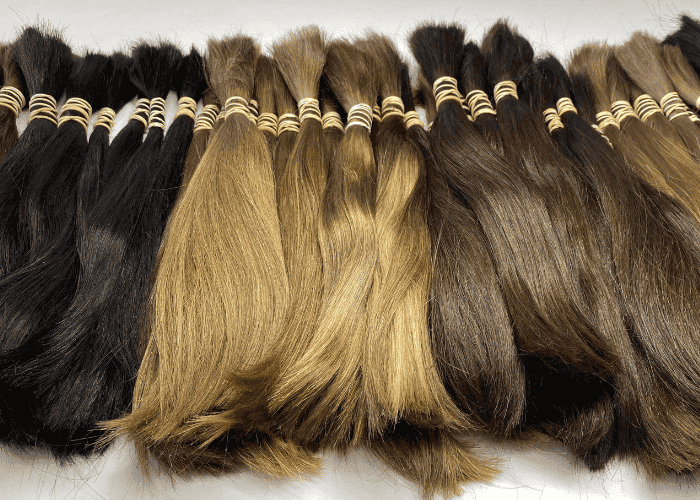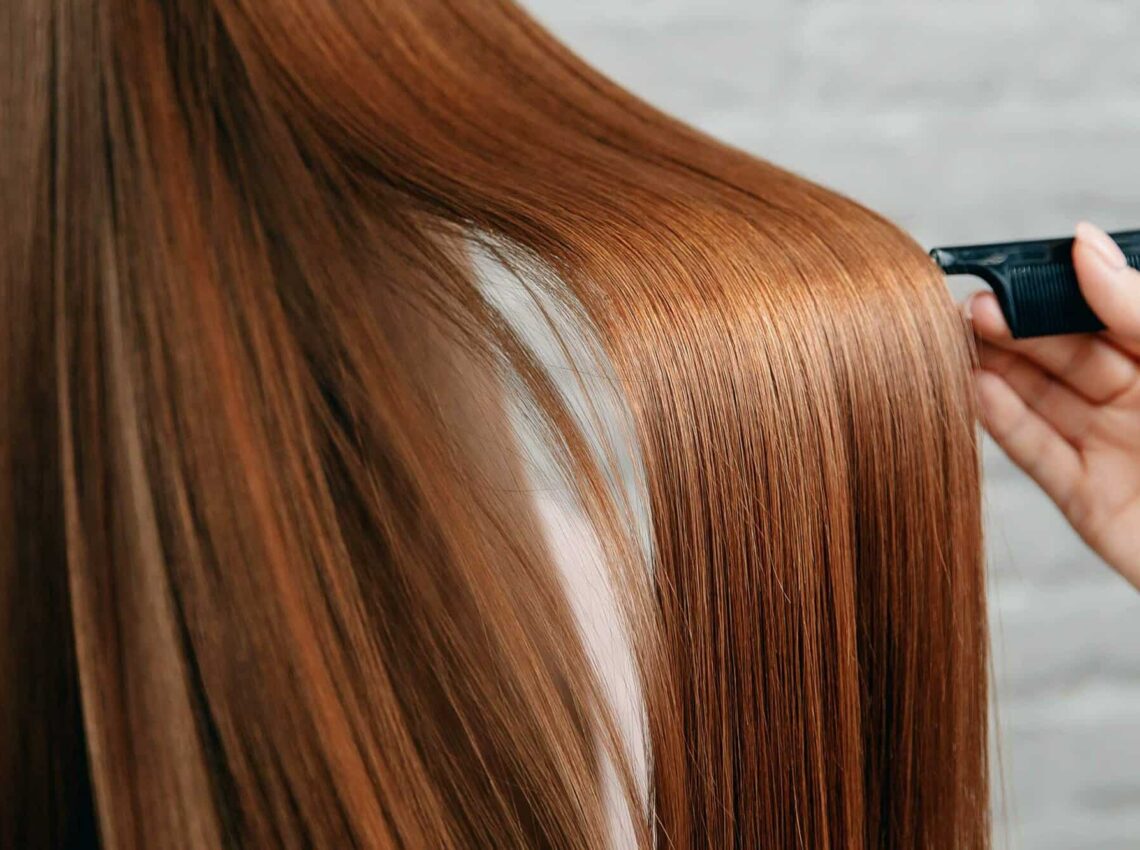Tracing the Origins of Human Hair Extensions: My Insights and Experience
Human hair for extensions primarily comes from voluntary donations and sales in countries like India, China, and Eastern Europe. Major sources include religious temple donations in India1, individuals selling their hair for income, and hair collected from salons. This seemingly simple journey from raw hair to desirable extensions is fraught with layers of cultural, ethical, and economic implications. As someone deeply immersed in the hair extension industry, particularly with Plucharm Hair, I've seen these dynamics at play firsthand. Whether you're a salon owner, like those we've served, or simply curious about where your extensions come from, understanding these origins is crucial for informed decisions.
Where Does Human Hair for Hair Extensions Come From?
Our journey begins in the bustling temples of India, where devotees offer their hair as an act of devotion. Temple hair, known for its quality and volume, is then auctioned off, turning devotion into a significant revenue stream for these sacred institutions. Meanwhile, in rural China, women meticulously care for their hair before selling it, contributing significantly to their household income. In Eastern Europe, the demand for 'Slavic hair2' has created an industry where individuals sell hair for financial gain. From my perspective, witnessing how hair moves from these sources to the end product we carefully craft at Plucharm Hair is both fascinating and rewarding.
Dive Deeper: Religious Temple Donations in India
The most iconic source of human hair for extensions3 is the temple donations in India1. Every year, millions of devout Hindus visit temples to offer their hair, a practice believed to symbolize humility and gratitude. The hair is then cleaned, sorted, and sold in auctions, primarily to raise funds for the temple and nearby social projects. This ethical sourcing4 model is something Plucharm Hair values and supports—transforming acts of spiritual dedication into economic and social benefits.
- Quality: Temple hair is often untreated and rich, making it highly sought after for extensions.
- Ethical Concerns: While generally seen as ethical, the consent of donors and fair treatment remain under scrutiny.
Where Does Most Commercially Used Human Hair Come From?
A significant portion of the commercially used human hair originates from China, given its large population and well-established collection networks. The hair is collected from rural areas, salons, and even from fairs where hair competitions are held. Eastern Europe, famous for its rare and premium quality5 'Slavic hair2,' contributes to a smaller, albeit highly desired, segment of the market. As someone committed to quality and ethical practices, sourcing approximately 30% of our raw materials from these regions allows Plucharm to provide versatile and superior products.
Dive Deeper: Individual Hair Sales
In China, hair is often seen as a tradable commodity. Women in rural areas grow their hair long, taking meticulous care to keep it healthy, knowing that this can become a significant source of income. This practice sees hair being sold in salons and directly to collectors, a method that contrasts with the temple auctions and offers a more personal, direct economic impact6 on individuals.
- Contribution to Income: Selling hair can support families by supplementing agricultural income.
- Quality Control: Ensuring the hair is healthy and natural is crucial, a standard maintained religiously at Plucharm.
Where Do They Source Hair for Hair Extensions?
Factors like ethical practices, hair quality7, and source authenticity are paramount. At Plucharm, our sourcing strategy balances these concerns by partnering with verified suppliers8 in countries known for their quality hair contributions. China and India's collected hair dominates the market, but each region adds a unique flair—whether it's the fine texture of Eastern European hair or the naturally wavy Indian hair.
Dive Deeper: Salons as Hair Sources
Salons round out the trio of primary sources. Utilizing salon waste9, which many might disregard, respects the cycle of reuse and upgrades what would be discarded into premium extensions. This sustainable sourcing10 method mirrors our Plucharm values of honesty and efficiency.
- Environmental Impact: repurposing salon hair reduces waste.
- Matchmaking Quality: At Plucharm, we place significant emphasis on blending hair from various sources to meet diverse client needs.
Where Do Ethically Sourced Hair Extensions Come From?
As both an industry expert and a consumer advocate, I find that transparency around sourcing is increasingly vital. Ethically sourced hair originates from regions willing to ensure donor consent11 and fair compensation. Plucharm Hair takes these ethical considerations seriously, which is why our partnerships focus on verified suppliers8 who prioritize these standards.
Dive Deeper: Ethical Sourcing Practices
Navigating the complex ethics of human hair sourcing requires trust, transparency, and accountability. Ethical sourcing ensures that the donor's rights are respected and that fair trade practices are upheld. While each source presents its advantages, ensuring ethical practices remains a non-negotiable standard.
- Verified Partnerships: Plucharm emphasizes partnerships with suppliers who exhibit clear consents and fair practices.
- Consumer Trust: Offering ethically sourced products helps maintain brand reputation, crucial for salon owners facing critical clients.
Comparison Table: Major Hair Sources
| Region | Source Type | Key Characteristics | Ethical Concerns |
|---|---|---|---|
| India | Temple Donations | Voluminous, untreated hair | Donor consent, auction transparency |
| China | Individual Sales | Often untreated, diverse textures | Broker practices, fair compensation |
| Eastern Europe | Individual Sales | Rare, fine texture, premium quality5 | Consent, fair compensation |
Conclusion
In conclusion, understanding where human hair for extensions3 originates helps in making informed, ethical choices that resonate with your clientele. At Plucharm Hair, our dedication to excellence and integrity ensures that our products not only enhance beauty but do so with respect for their origins. From temples to salons, each strand tells a story—one of devotion, necessity, and culture. Such stories are not just reflected in our products but in the experiences we strive to provide for every salon owner and user, building a bridge of trust and quality across the globe.
Join us at Plucharm Hair, as we continue to weave threads of beauty and ethics into every strand, creating the best hair for beautiful women worldwide. For more information, visit www.plucharm.com.
-
Learn about the unique practice of temple donations and its impact on the hair extension market. ↩ ↩
-
Discover the characteristics of Slavic hair and why it is considered premium in the hair extension industry. ↩ ↩
-
Explore the diverse origins of human hair for extensions to understand its cultural and economic significance. ↩ ↩
-
Understand the importance of ethical sourcing and how it affects the hair extension industry. ↩
-
Find out what makes hair extensions premium quality and how it affects consumer choices. ↩ ↩
-
Understand the economic benefits of the hair extension industry for communities involved in hair sourcing. ↩
-
Find out what factors contribute to the quality of hair used in extensions and why it matters. ↩
-
Discover why partnering with verified suppliers is crucial for ethical and quality hair sourcing. ↩ ↩
-
Learn about sustainable practices in the hair industry and how salon waste can be transformed into valuable products. ↩
-
Discover the principles of sustainable sourcing and their importance in the hair extension market. ↩
-
Learn about the ethical considerations surrounding donor consent in hair sourcing. ↩




